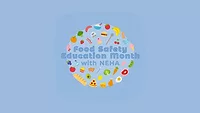FDA’s CFSAN Discusses Food Safety Successes, Challenges

Credit: The U.S. Food and Drug Administration's Center for Food Safety and Applied Nutrition
Susan T. Mayne, Ph.D., the Director of the Center for Food Safety and Applied Nutrition (CFSAN) at the U.S. Food and Drug Administration (FDA), was the Keynote speaker at the 2022 Institute for the Advancement of Food and Nutrition Sciences' (IAFNS') Annual Meeting and Science Symposium. In her presentation, Dr. Mayne discussed the direction for, and challenges facing, FDA and CFSAN.
The ten-year anniversary of the Food Safety Modernization Act (FSMA) took place in 2021, at which point FDA evaluated the impact and progress of FSMA. Dr. Mayne stated that, because of FSMA, the thought process around food safety has shifted to a preventive approach across the entire domestic supply chain.
Dr. Mayne continued by explaining two foundational rules that FDA is working on. The first, “Requirements for Additional Traceability Records for Certain Foods,” would establish additional traceability record-keeping requirements for certain foods. Dr. Mayne stated that FDA expects to issue the final rule by November 2022.
The second rule, “Standards for the Growing, Harvesting, Packing, and Holding of Produce for Human Consumption Relating to Agricultural Water,” would set new standards for water used in agriculture. “This is one of the most challenging areas of produce safety,” Dr. Mayne said, calling the proposed rule a “game-changer” if it is finalized. Since water can be a conduit for foodborne pathogens, the proposed rule aims to protect public health from such risks. Dr. Mayne highlighted the online Agricultural Water Assessment Builder that FDA developed to help farms understand the proposed requirements for agricultural water assessments.
Dr. Mayne also discussed the FDA Outbreak Response Improvement Plan, which aims to facilitate more timely and effective responses to foodborne illness outbreaks. The plan focuses on leveraging technology-enabled product traceback, conducting root cause investigations, analyzing and disseminating outbreak data, and making operational improvements. Root cause analysis is paramount, according to Dr. Mayne. “Getting the science—getting the data—is crucial to improving our outbreak response,” she said.
As FDA transitions from a reactionary to a preventive approach to food safety, a structured process is required, explained Dr. Mayne. She underscored opportunities for FDA to further its preventive goal, such as bringing stakeholder clarity to prevention activities and mitigating the public health burden of foodborne pathogens. Dr. Mayne also linked FDA’s enhanced disease attribution abilities through whole genome sequencing to an increase in foodborne illness outbreak detection.
Dr. Mayne also discussed toxic organic elements in foods and FDA’s Closer to Zero initiative, which is the agency’s action plan for reducing exposure to toxic elements from foods for babies and young children. “There are practical constraints to removing toxic elements from foods,” Dr. Mayne explained, since the toxic elements in question are naturally found in the environment and foods. While Dr. Mayne stated that the level of toxic elements in food will never be zero, she highlighted the successes FDA has made in reducing the public’s exposure to these elements from food. According to Dr. Mayne, since the time that federal agencies have begun focusing on respective toxic elements in foods, there has been a 30 percent reduction of inorganic arsenic levels in infant rice cereal, and a 95–97 percent reduction in lead exposure. Additionally, Dr. Mayne mentioned FDA’s draft guidance for action levels for lead in juice.
Looking for quick answers on food safety topics?
Try Ask FSM, our new smart AI search tool.
Ask FSM →
Dr. Mayne also addressed per- and poly-fluoroalkyl substances (PFAS) use in food contact materials and its contamination of food. She described the total diet study (TDS) that FDA conducted to assess PFAS in the food supply. The TDS found almost no evidence of PFAS in commonly consumed foods from the general U.S. food supply, with detectable levels of PFAS found in only ten foods. Of the ten foods with detectable PFAS levels, eight were seafood products. In response, FDA conducted a survey to discern which seafood items are most commonly consumed in the U.S., the results for which will be shared soon, Dr. Mayne assured.
Another food safety concern that Dr. Mayne discussed was that of allergen labeling. The recent Food Allergen Safety Treatment Education and Research (FASTER) Act adds sesame to the list of major allergens that are subject to specific labeling requirements. CFSAN is working toward the implementation of the FASTER Act, which will become effective on January 1, 2023. CFSAN is also developing a framework for evaluating unlisted food allergens, and Dr. Mayne pointed to a draft guidance on the subject that FDA published in April 2022.
Finally, Dr. Mayne discussed the recent Abbott Nutrition infant formula recall and the infant formula supply crisis, which she said is an issue that is “at the intersection of food safety and nutrition.” She described the convergence of many factors that initiated the infant formula crisis, such as supply chain challenges caused by the COVID-19 pandemic, a dearth of sunflower oil caused by the war in Ukraine, a limited number of manufacturers, and the fact that some infants rely on formula as their sole food source. Dr. Mayne said that FDA is working around the clock to support the availability of safe, nutritious formulas by drawing on FDA’s experience with drug shortages and using regulatory flexibilities.
One specific action FDA has taken to assuage the infant formula crisis is the adoption of a temporary infant formula discretion policy, which allows for certain flexibilities for infant formula manufacturers and importers to increase the available supply of product. The discretion policy, alongside Abbott Nutrition resuming production at its Sturgis, Michigan facility, has resulted in an improvement in the availability of infant formula. Dr. Mayne cited White House data that shows a 7 percent increase of infant formula sales in the U.S. in 2022 compared to 2021, as well as a 24 percent increase of infant formula sales in May 2022. “What [FDA believes] is happening is that [necessary amounts of] formula have been produced, but consumers are purchasing [excess formula] due to a lack of confidence in the supply chain,” Dr. Mayne said. “While, as a parent, I understand why parents are [making these purchases]… this is now the situation [FDA] finds [itself] in.”
One attendee asked Dr. Mayne what lessons the agency will take and apply from infant crisis. Dr. Mayne replied by calling out the issue of the infant formula market’s concentration of manufacturers, explaining that manufacturers should be required to inform FDA of possible shortages and have risk management plans in place. She expressed her hopes for Congress to grant FDA the authority to require manufacturers to communicate possible shortages and risk management plans.
The IAFNS 2022 Annual Meeting and Science Symposium is taking place June 21, 2022–June 23, 2022, both virtually and in-person in Washington D.C.









